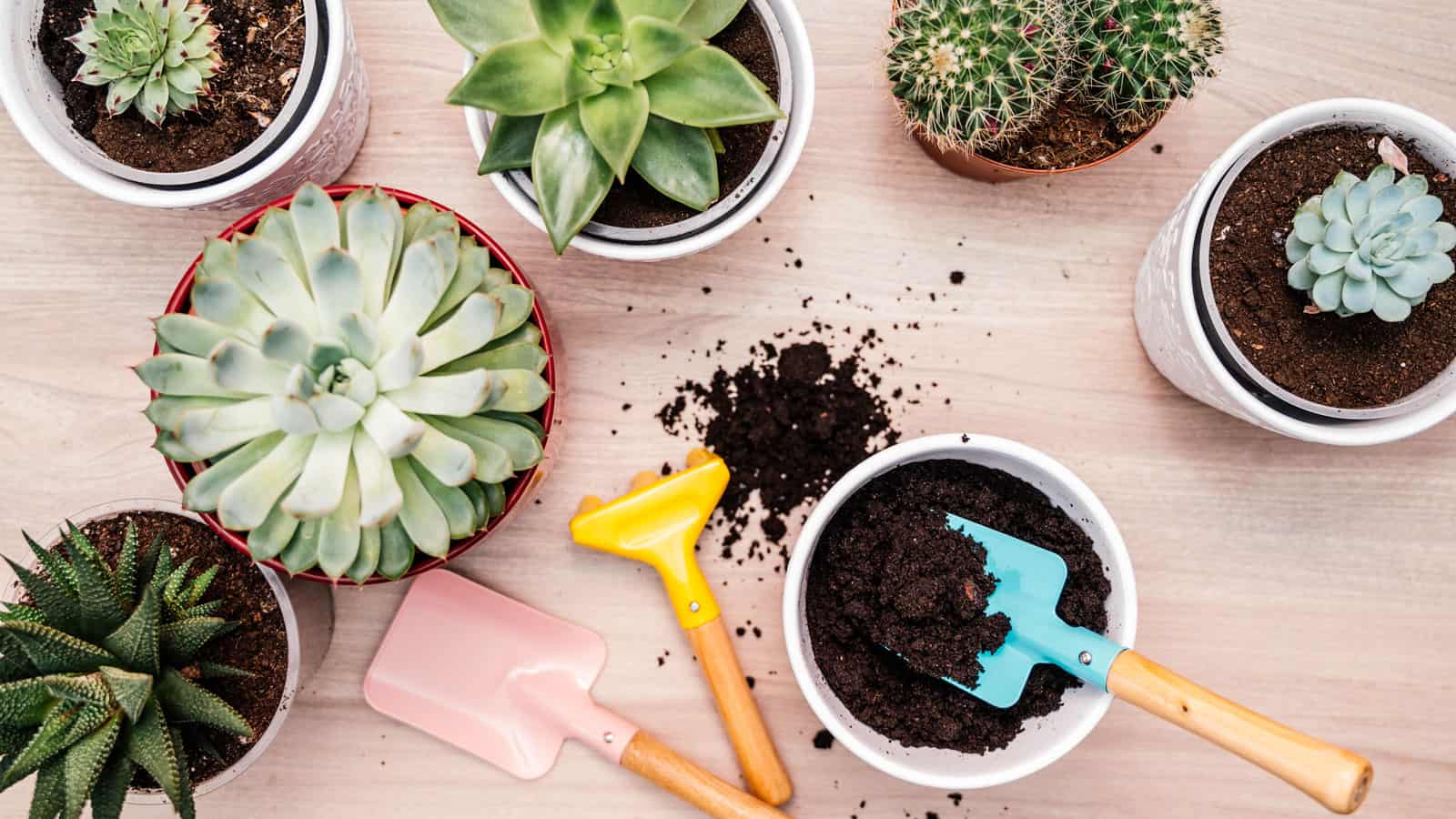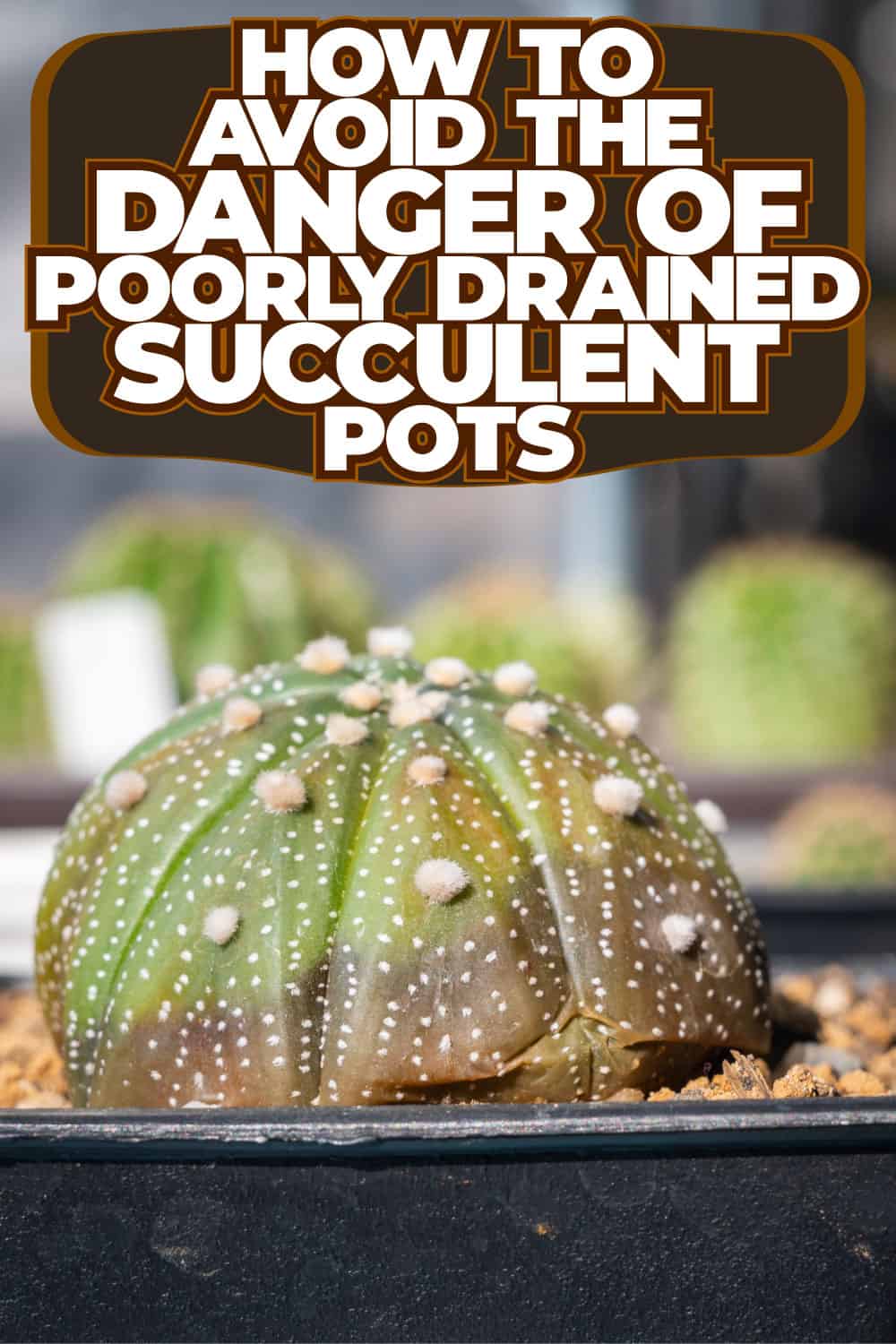Proper drainage is an important aspect of keeping your succulents healthy, but it's something that's often overlooked.
When succulent pots don't drain well, they become prone to excess moisture, creating an environment ripe for root rot and other fungal issues.

Have you noticed your succulents wilting or their leaves turning yellow? These are signs they're stressed from too much moisture. If this keeps up, it could even kill the plants.
In this article, we'll learn more about the perils of poorly drained succulent pots and share ways you can avoid these issues to keep your plants healthy.
Root Rot
Root rot is a major risk for succulents in pots that don't drain properly. These plants thrive in sandy or gritty soils that drain quickly, avoiding prolonged wet root conditions.
Poorly drained pots upset this balance, trapping excess moisture and depriving roots of needed air as water replaces air in the soil.
Root rot symptoms include yellowing or browning of leaves, wilting or drooping leaves, and soft, mushy, or discolored leaves.
If you notice these signs, follow these steps to save your succulent from rot.
- Remove the plant from the pot and gently shake off excess soil.
- Check the roots for any signs of rot or damage. If you see any, trim them off with a clean pair of scissors or pruning shears.
- Repot the succulent in fresh, well-draining soil and avoid watering it for at least a week to allow the roots to heal.
You can learn more about saving your succulent from root rot in this easy-to-follow guide.
To prevent root rot in the future, choosing the right type of soil and pot is essential. Succulent soil should be well-draining and contain a mix of sand, perlite, and peat moss.
Stunted Growth
When the roots are damaged due to excess water or rot, the plant's ability to absorb nutrients from the soil is compromised.
This can lead to nutrient deficiencies, further contributing to stunted growth and poor plant health.
In addition to using the right soil, you'll want to make sure to use pots with holes at the bottom.
Mold and Bacterial Growth
When there's a lot of water, poor drainage, and not enough air around your succulent, the soil gets very humid.
This humid soil is a perfect place for mold to grow. If your plant isn't getting enough sunlight, it adds to the wetness of the soil, making it an ideal spot for bacteria and fungi as well.
If you spot mold on your succulent, it's important to act fast. And while you can treat mold with a fungicide, it's best to stop it from happening in the first place.
This brings us back to the importance of using soil that drains well and choosing pots with holes at the bottom.
Possible Pest Infestations
Poorly drained succulent pots not only create conditions conducive to mold and bacterial growth but also add the risk of possible pest infestations.
Common pests like mealybugs, scale insects, aphids, spider mites, and fungus gnats thrive in humid conditions resulting from excessive soil moisture.
Fungus gnats, in particular, are a common problem in succulents with constantly moist soil. They love to live and lay eggs in wet soil.
These pests can stress your succulent and cause more issues, like infections. To avoid this, use pots that drain well and don't overwater.
Checking the plants for early signs of pests can also help keep your succulents healthy. If you do get a lot of pests, try neem oil, soapy water, or bug sprays.
Learn more about this Neem Oil spray on Amazon.
Before you spray your succulents with pest oil, be sure to find out the right way to do it. This ensures a safe and effective application.
Wilting and Death
Wilting and the eventual death of succulents are the most severe consequences of using poorly drained pots.
This dire situation typically starts with root rot, as we've shared, and can progress rapidly if not addressed.
As the roots deteriorate, the plant's ability to absorb water and nutrients is compromised, leading to a general decline in health.
Nurturing Healthy Succulents in Well-Drained Pots
It's evident that poorly drained succulent pots can harm your plants' health.
Using a pot with drainage holes and a well-draining soil mixture can ensure that your succulents thrive and avoid the risk of root rot and death.
If you're unsure about the quality of your soil, consider making your own succulent soil mix by combining sand, perlite, and potting soil in equal parts.


